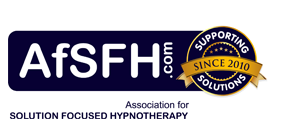Written by Debbie Daltrey
We all blush sometimes, usually from mild embarrassment. All that happens is that our cheeks darken slightly, which soon passes. However for some people erythrophobia (the fear of blushing) creates overwhelming feelings of anxiety.
Why do we blush?
Blushing is actually part of our primitive flight-or-flight response. When we’re faced with our old friend the sabre-toothed tiger, a blush isn’t going to save our lives – but, it’s a sign that our bodies are producing adrenaline, which will. When we produce adrenaline, our blood vessels widen to create a better blood flow, and this is why our faces redden.
Erythrophobia
An erythrophobic may not physically blush any deeper than the next person (and some people go a really dark shade without ever worrying about it). The difference is that an erythrophobic is excessively anxious about how they’re perceived – it’s actually a social phobia.
Erythrophobia creates a vicious circle: the more you fear blushing, the more you blush, and so on. People who don’t experience it can be dismissive (“it’s only your face getting a bit red”). However, for the erythrophobe, blushes create overwhelming anxiety.
It’s not an unusual phobia, and it’s something that hypnotherapy can help with.
Overcoming blushing in meetings: a case study
I’ve recently worked with a client to help her manage erythrophobia. In every way, she appeared to be a confident woman, and with no fear of blushing in social situations. However, she had become scared of contributing in work meetings in case she blushed. This had led to a negative forecasting tendency: people would judge her, she’d be viewed as incompetent. You can see her thought trail. My client felt it was limiting her career prospects and so she came for help.
The role of catastrophising
My client was so anxious that she started to catastrophise, which means that she focused on the worst possible outcomes. To the anxious mind, the route from a blush to a work demotion is a clear and sequential one. The fact that her colleagues probably wouldn’t even notice a blush ceased to compute once her brain set out along a negative forecasting path.
How hypnotherapy helped manage her erythrophobia
We needed to set her along a new pathway, using a mix of techniques. We discussed ways to convert negative thoughts into positive ones, including solution focused questioning, which helps create a vision of a preferred future outcome (such as being confidently involved in meetings). We then used trance work to strengthen new perceptions and goal opportunities we had discussed.
I set my client “homework”. As well as listening to the audio I gave her every night, she was to focus and reflect on her successes at work each day. This positive focus strengthens neural pathways and encourages more of the ‘solution behaviour’ for example, the desired thoughts, feelings and behaviours.
At the start of our sessions, we would discuss progress in the week since we last met. One day she replied “I’ve been in meetings, this week, and it was fine”. I asked her how she knew she was fine, and her answer was wonderful: “Well, I didn’t even think about me. My focus was on the meeting and I was so engrossed in the discussion that it was natural just to join in.” We built on that, setting realistic weekly goals. She’s now finished her therapy programme, and is happily contributing to meetings and getting the recognition she deserves.
Click here to find a solution-focused hypnotherapist near you who can help you with phobias.
Debbie Daltrey – Solution Focused Clinical Hypnotherapist
Great Minds Clinic
07724 855395
www.greatmindsclinic.co.uk
hello@greatmindsclinic.co.uk
facebook.com/greatmindsclinic/
@greatmindsclini
